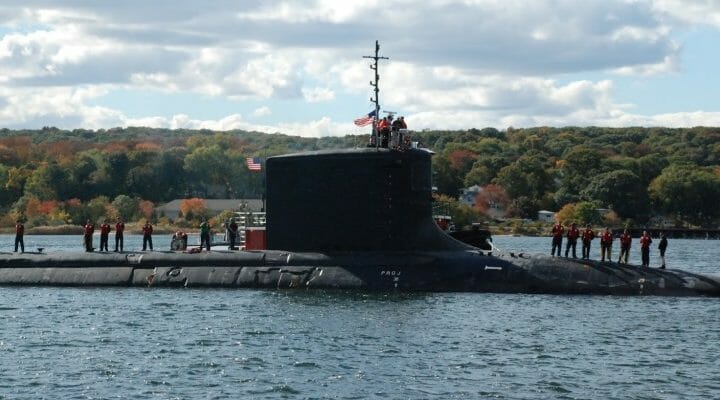Rosatom, Russia’s State Atomic Energy Corporation, has launched the Akademik Lomonosov, a nuclear reactor barge. The ship left the port of St. Petersburg on Saturday for a long, slow journey around Norway into the Arctic Sea. It will take on its fuel of low-enriched uranium in the port of Murmansk before proceeding to Pevek, a city of 100,000 people in the extreme northeast of Russia. Once it arrives in 2019, it will provide 70 megawatts of electricity to the region.
Predictably, environmentalists are hitting the panic button, calling her a “nuclear Titanic,” or better, a “floating Chernobyl.” Predictably, they’re wrong on both counts. Given the number of nuclear powered aircraft carrier submarines deployed by multiple nations over the last 64 years, the Russians have plenty of experience with seaborne reactors. And they’re nothing like the reactor at Chernobyl.
The Akademik Lomonosov uses a reactor known as the KLT-40S, a modification of the reactor used to power some Russian Navy vessels. According to the International Atomic Energy Agency, the KTS-40S design has a combined operating history of 300 reactor-years. In that entire time, “there have been no cases of navigation termination due to [reactor plant] failures, and no incidents associated with fission reaction control failures, core cooldown failures, uncontrolled nuclides transport, or excessive personnel exposure.”
In other words, it is a proven reactor design with a spotless safety record.
But beyond that, putting a nuclear power plant on a ship to provide electricity ashore isn’t exactly a new idea. The U.S. Army pioneered the idea 50 years ago.
ARMY NUCLEAR POWER PROGRAM
The Manhattan Project that built the first nuclear weapons officially ended with the passage of the Atomic Energy Act of 1946. This law relieved the military of its responsibility for the development of nuclear weapons and created the civilian-led Atomic Energy Commission. At the time, nuclear power was too expensive for utilities to pursue on their own, so the federal government assumed exclusive ownership of all “fissionable materials.”
As reactor designs progressed, the economics of building reactors to generate electricity began to make sense. In conjunction with the AEC, the Army Corps of Engineers began the Army Nuclear Power Program in 1954, and managed it from inception through its termination in 1977. The Corps built nine nuclear reactors, including its first one, in my backyard at Fort Belvoir, Va., just 14 miles down the Potomac River from the White House.
The Belvoir reactor, designated SM-1, was not only the first reactor built with a containment vessel, it was the first nuclear reactor to connect to a commercial power grid. But it wasn’t the most interesting part of the program.
In 1963, the Army took possession of a former World War II Liberty Ship that it renamed the Sturgis. At Fort Belvoir, engineers converted the Sturgis into a floating power plant capable of generating 10 megawatts of electricity. Its reactor began operation in 1967, and in 1968, the Sturgis was towed to the Panama Canal Zone. A water shortage had made hydroelectric generation impractical, since water was needed for the operation of the canal’s locks.
From its arrival in 1968 through its decommissioning in 1976, the Sturgis provided the power necessary to keep the canal running. When it was decommissioned, it was de-fueled, sealed, towed back to Virginia, and placed in storage in the James River Reserve Fleet adjacent to Fort Eustis. In 2014, she was towed to Galveston, Texas, where engineers are dismantling the ship. With the removal of the reactor vessel removed last June, the Corps of Engineers says it has removed 99 percent of the radioactive material without incident.
I think the polar bears in Pevek will be just fine.




